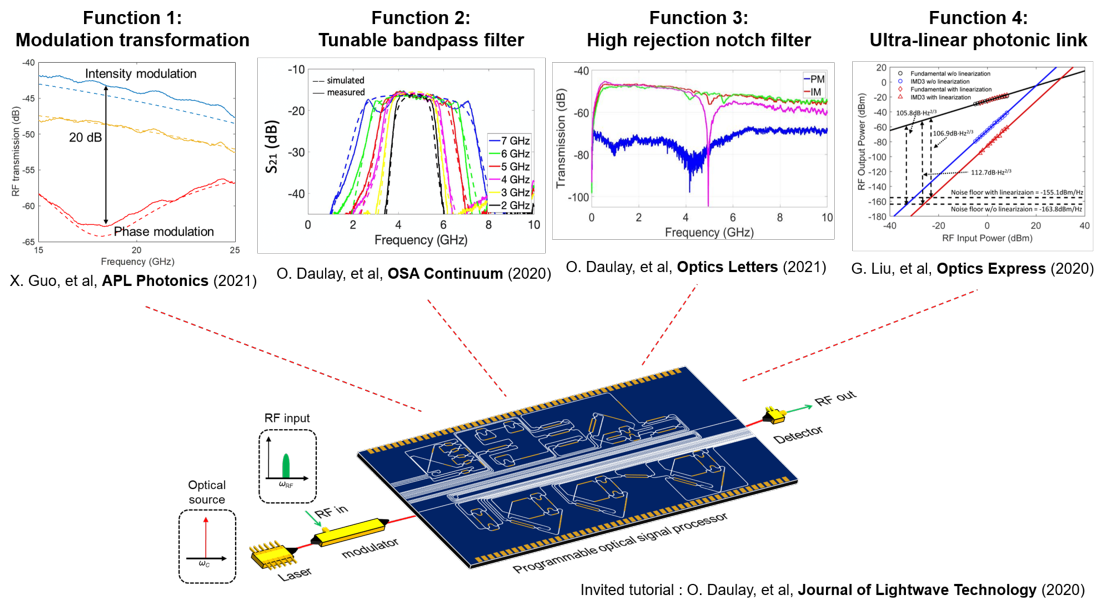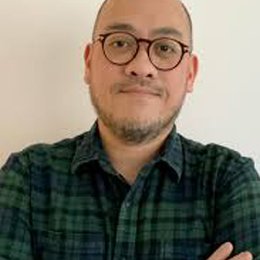Shaping radio signals using photonics technologies seems like a detour. But the versatility of current programmable silicon photonic circuits can open new possibilities according to researchers of the University of Twente. They present their ‘microwave photonic spectral shaper’ in APL Photonics. The paper is highlighted as an 'editor's pick'.
For processing signals in the radio frequency (RF) domain, for example in 5G communications, future 6G or radar, sharp filtering and other high-precision operations on the high frequency radio signals are important. Light, molded in integrated photonic circuits, can offer signal processing with large bandwidths and unmatched flexibilities thanks to the programmability of integrated photonics. But still, the stage where radio signals are converted to lightwaves, known as optical modulation is cumbersome. The ‘spectral shaper’ that is now presented by the researchers, solves this bottleneck thanks to a number of flexible photonic components.
Programmable photonics
In order to shape the information signal, first the light components should be ‘taken apart’. The separate parts like the radio ‘side bands’ around the optical frequency can then be processed separately. When all photonic processing is done and the desired spectral shape is created, light is recombined and converted back into a radio frequency signal. All of these processes were done in the silicon chip using ring-shaped resonators and filters that can be electronically programmed. The chip also includes a high-speed detector for converting the light back to radiowaves.

In previous publications, the researchers demonstrated that a photonic chip can serve as a 'Swiss army knife' for shaping radio signals
“This new spectral shaper is the basis for a whole range of complex operations that can be done on RF signals using programmable photonics “, David Marpaung says. He is a Professor at the Nonlinear Nanophotonics group at the University of Twente.
The chip that the researchers from Twente, Sydney and Ghent demonstrate in this paper, was made using silicon photonics. Next generation chips made in silicon nitride – the main photonic technology at UT’s MESA+ NanoLab – are currently under tests in Marpaung's lab.
The paper ‘Versatile silicon microwave photonic spectral shaper’, by Xin Guo, Yang Liu, Tangman Liu, Blair Morrison, Mattia Pagani, Okky Daulay, Wim Bogaerts, Benjamin Eggleton, Alvaro Casas-Bedoya and David Marpaung, is published in APL Photonics.
More recent news
 Thu 18 Dec 2025MedTech sector launches national growth plan
Thu 18 Dec 2025MedTech sector launches national growth plan Tue 16 Dec 2025Two UT projects receive Perspectief grant
Tue 16 Dec 2025Two UT projects receive Perspectief grant Thu 11 Dec 2025Three new NAE Fellows and Young Engineers with UT background
Thu 11 Dec 2025Three new NAE Fellows and Young Engineers with UT background Fri 5 Dec 2025Transforming urban policy for a healthier and safer Enschede (and other cities)
Fri 5 Dec 2025Transforming urban policy for a healthier and safer Enschede (and other cities) Fri 28 Nov 2025UT celebrates 64th Dies: a look at the hospital of the future
Fri 28 Nov 2025UT celebrates 64th Dies: a look at the hospital of the future

